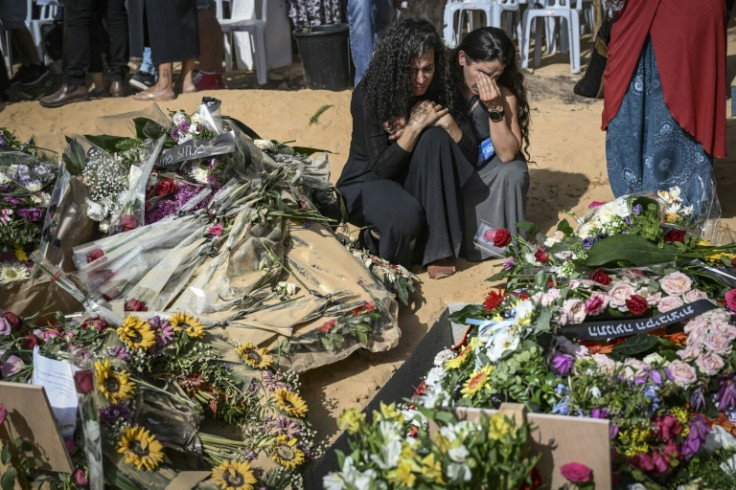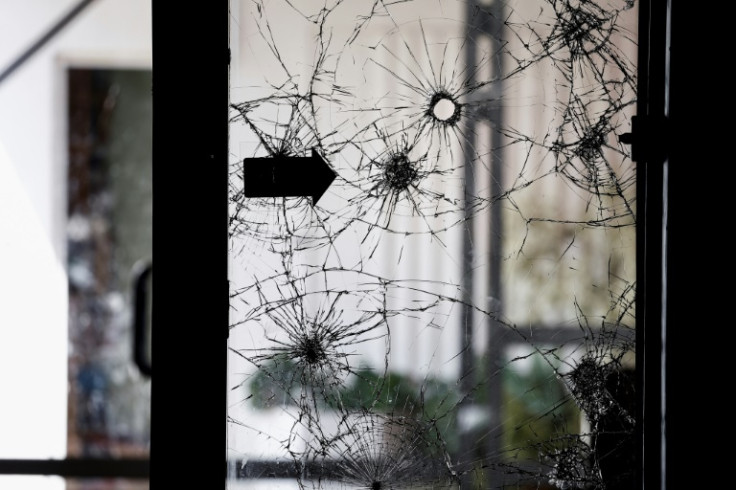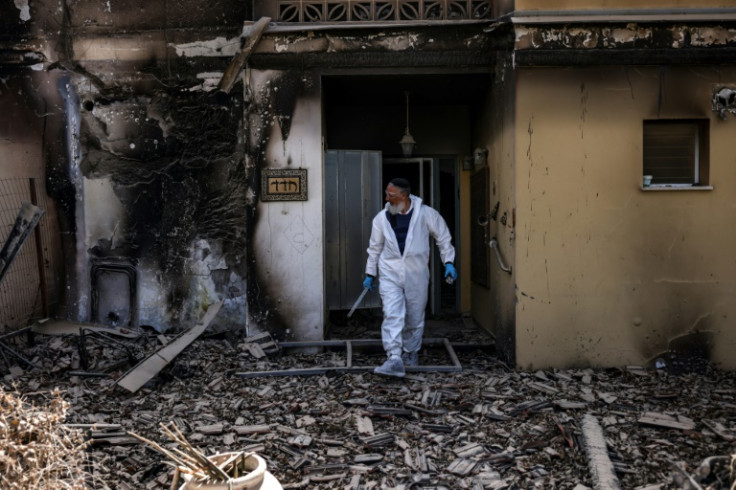
A more precise picture of Hamas's October 7 attack on Israel has emerged from social security data, confirming the unprecedented scale of the violence but also challenging some initial testimonies.
The final death toll from the attack is now thought to be 695 Israeli civilians, including 36 children, as well as 373 security forces and 71 foreigners, giving a total of 1,139.
This excludes five people, among them four Israelis, still listed as missing by the prime minister's office.
The violence began when armed men from the Palestinian Islamist movement broke through the militarised border with Gaza on Shabbat, the last day of the Jewish holiday of Sukkot.
Under the cover of thousands of rockets fired from Gaza, they killed indiscriminately in streets, houses, kibbutz communities and at a rave music festival.
It took more than three days of heavy fighting for the Israeli army to regain control, and left the country deeply traumatised by violence unseen since the country's formation in 1948.
Police are still working to assess the scale of the sexual violence that was reported alongside the killings.
On October 14, Israeli authorities announced a preliminary toll of more than 1,400 people killed by "Hamas terrorists".
On November 10, the foreign ministry published an "updated estimate", saying the number "murdered in cold blood" was around 1,200 people, without further details.
With many of the bodies mutilated or burned beyond recognition -- including entire families in their homes -- it has taken forensic doctors weeks to identify them all.
Israel has vowed to destroy Hamas in response to the attack. Its air and ground offensive has killed more than 18,700 people, mostly women and children, according to figures from the health ministry in the Hamas-run Gaza Strip, and left much of the territory in ruins.
The identities and ages of civilian victims are available via Bituah Leumi, Israel's social security agency.
Its website lists 695 people killed during the attack, with names and the circumstances of their deaths.
Among them are 36 children, including 20 under 15 years old and 10 killed by rockets.
The youngest victim was 10-month-old Mila Cohen, shot and killed at Kibbutz Beeri.
An entire family, including three children aged between two and six, were killed in their home at Kibbutz Nir Oz.
Elsewhere, two brothers aged five and eight were shot dead in their car with their parents.
A five-year-old boy was killed in the street by a rocket.
The data gives a clear picture of the scale of the atrocities at the Supernova music festival in Reim where 364 people were killed.
But it also invalidates some statements by Israeli authorities in the days following the attack.
In particular, a claim made on October 10 on the government's official X (formerly Twitter) account spoke of "40 babies murdered" at Kfar Aza kibbutz, based on a report by i24NEWS channel.
Questioned by AFP the following day, Israel's foreign ministry, which runs the X account, said it could not "confirm any number at this stage".
According to Bituah Leumi, 46 civilians were killed in Kfar Aza, the youngest 14 years old.
Another testimony called into question was that on October 27 by Colonel Golan Vach, head of the army's search and rescue unit, who told a group of journalists, including one from AFP, that he "personally" transported "a decapitated baby" found in the arms of his mother in the Beeri kibbutz.
According to Bituah Leumi, only one baby was killed in Beeri: the 10-month-old Mila Cohen, whose mother survived.
Army spokespersons did not respond to queries by AFP.
The extreme nature of the violence can make it hard for responders to be accurate in their testimonies, said members of Zaka, an emergency response NGO that helped collect victims' bodies.
"When we find bodies that are burned or in a state of decomposition, we can easily be mistaken and think the body is a child's," said Haim Otmazgin, a Zaka leader.
One Zaka volunteer had, for example, spoken on October 11 of 20 children with their "hands tied in the back, shot and burned" in Beeri, but ultimately only nine children died there.
"Our volunteers were confronted with traumatic scenes and sometimes misinterpreted what they saw," said Otmazgin.
There were also 71 foreign victims on October 7, mostly Thai workers.
And in the fighting to regain control of southern Israel, 58 police, 10 members of internal security service Shin Bet, and 305 soldiers were killed, including several dozen unarmed soldiers guarding the border with Gaza.
Israel counts both soldiers killed in action and off-duty soldiers in its military casualties, and so these figures include, for example, some who died at the Supernova festival or while visiting their family in the south.
The Bituah Leumi data does not distinguish between those killed by Hamas and civilians killed by Israeli forces in the fighting to retake control of southern Israel, an operation in which the army used shells and rockets on inhabited areas, according to testimonies collected by AFP and Israeli media.
It is also unclear how many Palestinian militants were killed on Israeli soil.
The army said on October 10 that it had found "around 1,500 bodies" of attackers, without giving further details. The army and defence ministry did not respond to queries from AFP on this topic.
In an interview with Al Jazeera, Hamas second-in-command Saleh al-Aruri said "around 1,200 fighters" took part in the October 7 attack.
Israel also faces the ongoing trauma of some 250 hostages who were dragged back to Gaza in the attack, according to Israeli authorities.
Since then, 110 have been released, most during a one-week truce in November, and eight bodies of hostages have been returned.
Israel says Hamas still holds 132 hostages, including 19 presumed dead.










